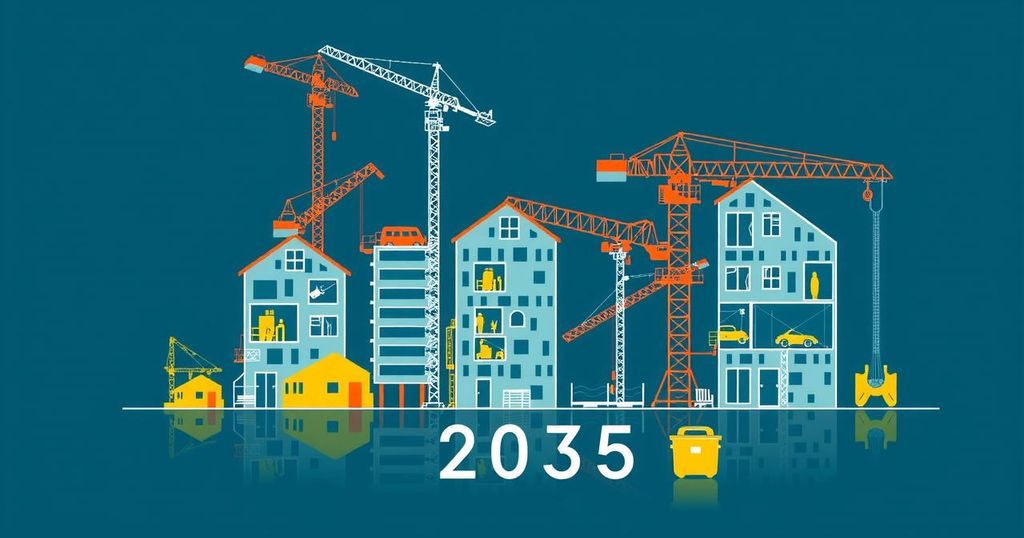Building a Better Tomorrow: The New Workforce Strategy for Construction and Utilities

The government has approved a new workforce training strategy aiming to equip the construction and utilities sectors with skilled professionals by 2035. The plan forecasts a growth in the workforce, emphasizes practical training in education, and promotes engagement among young individuals to ensure alignment with industry needs. Financial support from various sectors will help modernize facilities, and a full implementable plan is expected within three months.
The government has officially given a thumbs-up to a new strategy for training professionals in the construction and utilities sectors, with the goal set for 2035. It aims to tackle the growing need for construction workers and utilities staff in today’s buzzing job market. This brilliant initiative was signed into action by Prime Minister Mikhail Mishustin, who clearly knows a thing or two about improving the workforce! According to the strategy, we should expect an increase in personnel in these areas, predicting a bustling 6.5 million construction and utility pros by the end of 2024. By 2030, this number is set to rise to 6.8 million and reach a whopping 7.3 million by 2035! That’s a lot of hard hats and tool belts needed to meet the demand, especially from fresh-faced grads ready to build their futures (and maybe some buildings too!). To meet this demand, educational institutions must bridge the gap between what they teach and what the industry truly needs. Classrooms should focus more on hands-on, practical experiences so students acquire the skills they need instead of just theoretical knowledge. It’s like going to cooking school but only learning how to look at menus! Then, we have the enterprises pulling the purse strings – they might chip in to update training facilities, lab equipment, and other educational goodies, making education less about dusty old books and more like innovation in action! And let’s not forget the good old federal and regional budgets stepping up to back infrastructure development. Who said money can’t improve learning environments? The plan also suggests universities help spotlight high schoolers interested in construction careers, kind of like a talent scout for future builders! These teens can join precursory programs that give them a sneak peek into their potential career paths while getting a feel for the tools of the trade. Talk about hands-on experience before you even finalize your plans! The strategy even includes some smart marketing to whet the appetite for construction careers. We’re talking competitions, social media shoutouts, and clever messaging to get kids excited! It’s a full-blown publicity campaign ensuring that future builders know where to find their path. The Ministry of Construction has three months to whip up an action plan to implement this exciting strategy. Mikhail Mishustin must be feeling pretty optimistic about all this! In related news, Deputy Prime Minister Marat Khusnullin chimed in, highlighting that this plan will enhance the workforce’s caliber and boost the appeal of construction and utility jobs. “The President has set big goals for ensuring comfortable and safe environments for living, and we need a qualified team ready to achieve victory at every turn,” he said, hinting at the forthcoming ‘Infrastructure for Life’ project. Who knew infrastructure could sound so cool?
With the construction sector booming and utility services more important than ever, the government has recognized the need for a strategic overhaul in training new professionals. The stakes are high as the demand for skilled workers keeps climbing. This plan aims to realign educational programs with industry needs while promoting the appeal of careers within construction and utilities. It’s a tactical play to funnel fresh talent into these vital sectors.
The approval of this training strategy marks a significant step towards strengthening the construction and utilities workforce. By aligning education with real-world needs and encouraging youth engagement in these fields, the government is setting the stage for a well-equipped, competent workforce ready to tackle the challenges of the future. With financial backing from both the public and private sectors, the framework is likely to usher in a new age of skilled professionals.
Original Source: government.ru





